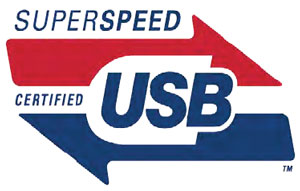The Universal Serial Bus (USB) was introduced in 1996 to allow easy connection of different devices to a computer by means of a fast serial link. Since then, USB has gradually become the widest used connection system for PCs, forcing at least two traditional connection systems, RS232 and Centronics, to take a distant back seat. USB has seen many speed increases and other enhancements over the years and release 3.0 seems to hold another promise.
Although USB has evolved since its introduction, its principal advantages have remained unchanged from the first version and can be summarized as:
• ‘Live’ connection / disconnection (hot swap). To connect or disconnect a USB device it is not necessary to switch off the computer.
• Bus Power: the USB can, in most cases, power devices.
• Plug and Play: the device connects to the USB and is almost instantly ready for use. In some cases, it is necessary to install a driver.


Discussion (0 comments)